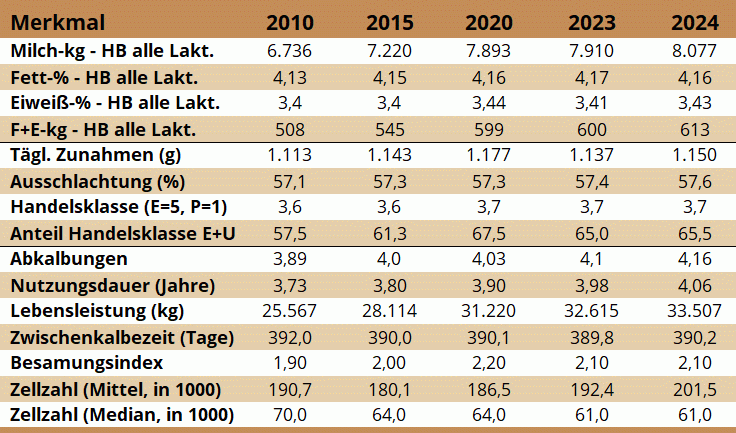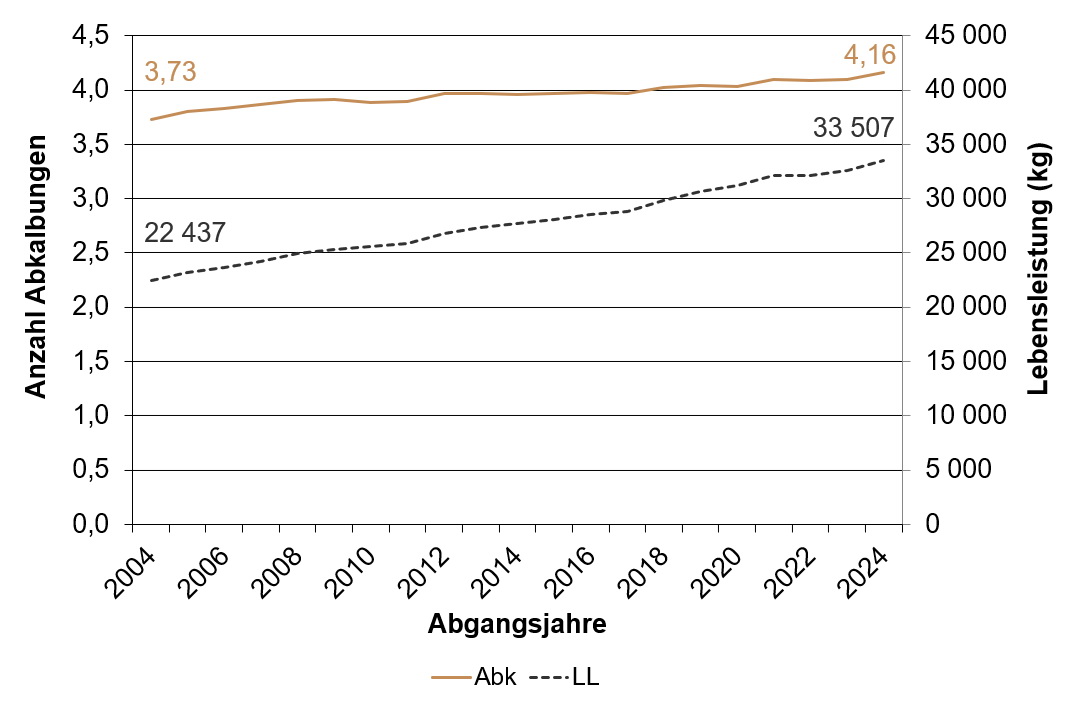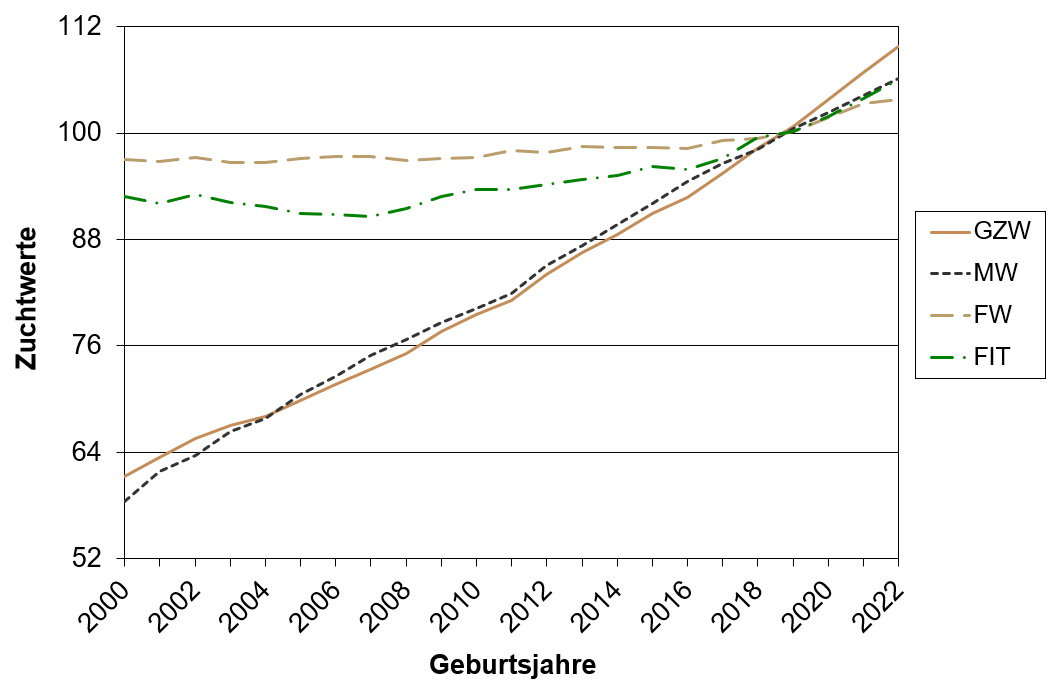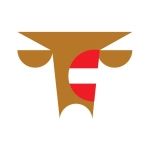As every year, the analysis of the Fleckvieh Austria breeding program is also on the agenda this year. Although there are usually only minor changes from one year to the next and in many cases only figures need to be updated, there are still some particular aspects that should be examined in more detail.
Big leap in performance
Table 1 shows the phenotypic performance in some key trait areas since 2010. It should always be borne in mind that these values can be influenced by factors such as weather conditions, the feed and price situation and the quality of the data.
This year’s milk yield broke the 8,000 kg barrier, which means an increase of almost 100 kg per year since 2010. The genetic development of fat and protein content has been slightly negative in recent years, but phenotypically the ingredients have remained stable during this period due to improved management.
Table 1: Development of selected phenotypic performances in Fleckvieh AUSTRIA since 2010 (ZuchtData annual reports, 2010-2024)
Despite the high level of performance and the largely negative genetic correlations, most meat and fitness parameters show a stable to slightly positive development.
In the meat sector, the daily weight gain of fattening animals is largely stable, the slaughter rate shows a slightly positive trend and the commercial class has by no means deteriorated, but is currently well above the level of 15 years ago. The proportion of bulls with commercial class E or U was 8 percent higher last year than in 2010.
In the fitness sector, the duration of use has been slowly but steadily increasing again for around 20 years and, at 4.06 years, was 4 months higher in 2024 than in 2010. During this period, the average lifetime yield of the retired cows increased by around 8000 kg, which is more than 500 kg per year. Figure 1 shows the development of lifetime production and the number of calvings over the last 20 years. The average number of calvings of cows that have died is currently 4.16, which is 0.43 calvings higher than 20 years ago.
The fertility parameters insemination index and calving interval have remained largely stable in recent years. The average cell count has risen continuously in recent years. However, the median cell count (half are above or below this value) has fallen from 70,000 to 61,000 since 2010. This means that the general cell count level has improved, but the extreme outliers (“millionaires”) have increased somewhat.
Fig. 1: Phenotypic development of the number of calvings and lifetime production of Simmental cattle in Austria over the last 20 years
Genetic development very positive
Genetic trends that reflect the average breeding values per birth cohort are used to evaluate long-term developments. Figure 2 shows the genetic trends of the female population in the main areas of total breeding value (GZW), milk value (MW), beef value (FW) and fitness value (FIT). Since 2010, the annual increase in the GZW has been 2.5 points. For decades, the milk value has recorded an almost linear increase of 2.2 points per year. There has been a slight upward trend in the meat value in recent years, with an annual increase of 0.5 points since 2010. The increase is particularly evident in the fitness value: here, the annual increase rose from 0.1 points (2000 to 2010) to 0.5 points (2010 to 2015) to 1.4 points per year in the period from 2015 to 2022.
Fig. 2: Genetic trends for GZW, MW, FW and FIT of Austrian Simmental cows
Significant improvements can still be observed in the conformation area, especially in the udder, but also in the feet & legs. Both trait groups are only indirectly reflected in the overall breeding value via the productive life, udder and hoof health value, but reflect this positive development due to their high importance in practice. After a prolonged rise or decline, the frame and muscle mass have now largely stabilized.
Proportion of genotyped animals continues to rise
For the quality of the single-step breeding values, the highest possible proportion of genotyped animals, which are included in the breeding value estimation with phenotypic performance, is decisive. Thanks mainly to the herd typing project FOKUHS (HERDE), 15.1 percent of living female Simmental cattle in Austria have already been genotyped (Fig. 3). Although there are clear differences between the breeding associations, all of them recorded an increase compared to recent years. The average genotyping percentage for calves and young cattle is 16.1 percent, while it reaches 18.3 percent for first-calf cows. FOKUHS HERDE and independent breeding initiatives are intended to ensure that the proportion of genotyping continues to increase.
(Excerpt from the article “Zuchtprogramm Fleckvieh AUSTRIA – der erfolgreiche Weg wird fortgesetzt” by Dr. Christian Fürst, ZuchtData; Fleckvieh Austria Magazin 1/25)








